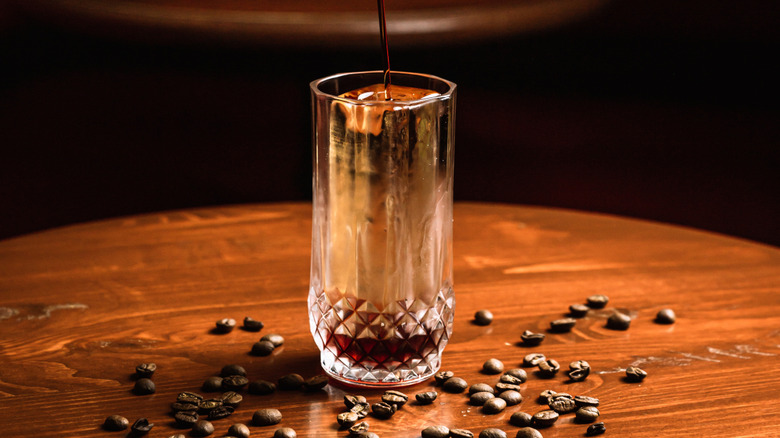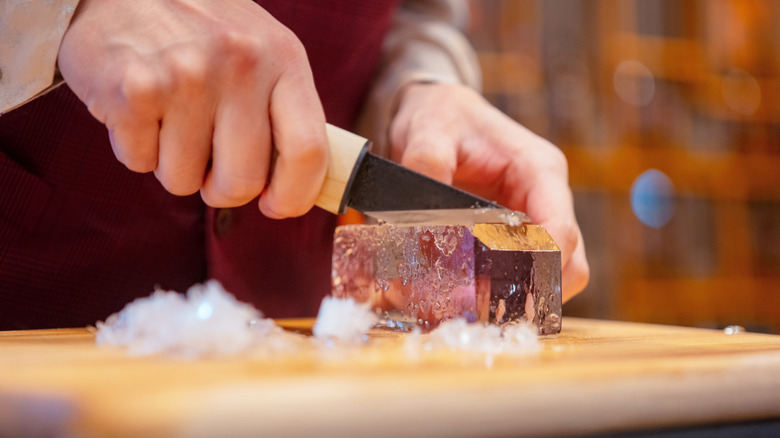How To Make Collins Spears At Home For Your Next Cocktail Party
We may receive a commission on purchases made from links.
When it comes to making cocktails at home, one crucial element to your drinks that can't be ignored is ice. Certain cocktails require certain specific types of ice – the punchy, tropical caipirinha, for example, requires crushed ice. Slightly headier drinks like the classic old fashioned (a staple of the at-home mixologist), meanwhile, require large cubes that melt slowly, so as not to dilute them too quickly. If you like highball cocktails, those served in a tall highball glass, that is, like a simple mojito or a Tom Collins, you might consider employing a Collins spear.
And no, it's not as complicated as it sounds — rather, the Collins spear is a long, thin block of ice that'll evenly chill your drink from top to bottom, and look cool while doing it. To find out how to make them at home, Food Republic spoke to Mike Ryan, Corporate Director of Beverage for Tanta Chicago and Acurio International. For an easy solution, he recommended turning to a Collins mold. Essentially, they're exactly the same as normal ice cube molds, just a little longer.
Ryan also recommends a slightly more hands-on approach if you don't have one: "If you want really clear Collins spears ... you can freeze a large block of clear ice, and then carefully cut it into Collins (in the ice shop, we would use a bandsaw, but I don't recommend that at home — a saw will work fine)."
How to make your ice crystal clear
But what if you want to replicate that crystal clear ice that you see at the best cocktail bars? It's surprisingly easy. When water freezes, any impurities that are present in it, such as calcium, become trapped (and concentrated) in the last few areas to freeze. This is what makes so many people's at-home ice cloudy. The solution is simple, according to Mike Ryan: "[B]uy Collins molds, cut a small hole in the bottom of each one, and use directional freezing with a liquid water reservoir underneath to accept the impurities and gasses."
What's directional freezing? Well, those impurities and gasses in the ice are the very last things to freeze, so providing a way for them to drain away as the rest of the water freezes (pushing them out of the ice mold) leaves the eventual frozen portion crystal clear.
For larger blocks, simply place a cooler of water in the freezer with the lid off and allow it to partially freeze overnight. The lid being off will mean that the freezing process begins from the top down, and the impurities will be forced below the ice. You'll be left with perfect ice, every time, with the impurities lurking in the remaining water below the frozen portion. If you don't feel confident with a saw, a serrated knife is a good alternative.
If you need clear ice quickly but don't fancy poking holes in your molds, why not try boiling the water prior to freezing? This will remove a number of those pesky impurities (namely, air), rendering your eventual ice much clearer, without the faff of directional freezing.


